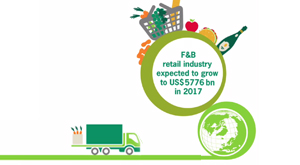Servicios
Nuestros equipos de Advisory (Consultoría) aplican su experiencia y huella global para desarrollar estrategias que se ajusten a lo que usted necesita.
-
Compliance
Asistencia en diseño, implantación y monitoreo de programas de Compliance en el marco de normativa local e internacional (FCPA, Ley de Responsabilidad Penal Empresaria), incluyendo dictado de cursos.
-
Sostenibilidad
Conocé cómo nuestros servicios de sostenibilidad pueden ayudarte a ir más allá y construir una reputación sólida, atraer inversionistas comprometidos y generar resultados financieros sostenibles a largo plazo.
-
Forensic
La oferta de servicios incluye el asesoramiento experto en apoyo en la resolución de litigios y en el desarrollo de procedimientos en materia jurídica/forense digital y ciberseguridad.
-
Human Capital
La división Human Capital de Grant Thornton cuenta con un equipo de profesionales determinados a acompañar a individuos y organizaciones durante todo el vínculo entre el colaborador y la organización.
-
Reestructuración organizacional
Asesoramiento en materia de reestructuración operativa a las empresas en dificultades, a sus acreedores o a otras partes interesadas.
-
Servicios al Gobierno y Sector Público
Proyectos de auditoría financiera y de revisiones especiales técnicas y concurrentes de programas de gobiernos nacionales y subnacionales financiados por organismos internacionales de crédito. Proyectos especiales para entidades gubernamentales, empresas públicas y mixtas.
-
Servicios de Valuation
Servicios de valuaciones de empresas y proyectos.
-
Transaction Advisory Services
La oferta de servicios incluye due diligence financiera; servicios de operaciones; inteligencia comercial y estratégica; valoraciones; asesoramiento en fusiones y adquisiciones, mercados de capital y asesoramiento en deuda.
-
Academy - Empowered by Grant Thornton Argentina & Perú
Academy es una plataforma de e-learning que surge como una iniciativa conjunta de Grant Thornton Argentina y Grant Thornton Perú. Está pensada para que todos puedan adquirir nuevas habilidades en contabilidad, auditoría, impuestos, tecnología y de negocios mediante el acceso a múltiples cursos y certificaciones.
Los servicios de Auditoría de Grant Thornton Argentina han sido diseñados para brindar soporte a nuestros clientes frente a los desafíos que implica el...
-
Auditoría Externa
Ofrecemos servicios de auditoría externa de estados financieros, informes de aseguramiento, informes de procedimientos acordados y certificaciones, due-diligence y take-over de empresas.
-
Metodología y Tecnología de Auditoría
En Grant Thornton utilizamos una única metodología de auditoría a través de nuestra red global. La aplicamos a través de una herramienta de software conocida como LEAP. Conocela ahora.
-
Normas profesionales y capacitación
Nuestros asesores NIIF pueden ayudarte a navegar por la complejidad de las normas para que puedas dedicar tu tiempo y esfuerzo en tu negocio.
-
Prevención de lavado de activos y financiación del terrorismo
Desde Grant Thornton brindamos asesoramiento a nuestros clientes en el desarrollo de una estrategia de Prevención del Lavado de Activos y Financiación del Terrorismo que les permita prevenir los riesgos en forma integral.
Debe concentrar sus energías en impulsar el negocio hacia adelante, y la externalización es una buena manera de conseguirlo.
-
Outsourcing impositivo
Los impuestos tienen un fuerte impacto en las decisiones de negocio. En Grant Thornton respondemos rápidamente y diseñamos soluciones a medida para que las organizaciones no se vean afectadas ni perjudicadas.
-
Payroll
Contamos con la experiencia y los conocimientos técnicos que nos permiten realizar liquidaciones de salarios de diversos sectores, incluidos aquellos en los cuales se desempeñan sindicatos y organizaciones de trabajadores.
-
Servicios de contabilidad, administración y finanzas
La contabilidad efectiva y asesoría financiera son necesarias para el éxito de una organización innovadora y con visión de futuro. Brindamos nuestro conocimiento y experiencia para que puedas mantenerte concentrado en las actividades principales de tu negocio.
-
Start-up de empresas
Las etapas iniciales de un negocio son clave para su éxito. Por ello, es importante contar con expertos que lleven adelante la gestión y la administración de los recursos empresariales. Conocé nuestras soluciones para ayudarte a construir tu empresa.
Las organizaciones dinámicas necesitan una amplia gama de servicios de asesoramiento para apoyar su ambición y el crecimiento.
-
Auditoría Externa
Ofrecemos servicios de auditoría externa de estados financieros, informes de aseguramiento, de procedimientos acordados y certificaciones, due-diligence y take-over de Entidades Financieras.
-
Revisor Externo Independiente UIF - PLA/FT
Participamos en la implementación de las exigencias de la UIF en empresas líderes y nuestros servicios aseguran un encuadramiento ordenado optimizando la inversión.
-
Auditoría Interna
Una auditoría interna ayuda a identificar vacíos, deficiencias y potencial de riesgo inherente en todas las facetas de la organización.
-
Auditoría Legal
El monitoreo del área legal suele ser una tarea compleja y dificultosa para las organizaciones, que sin embargo no puede descuidarse.
-
Creación y adquisición de Entidades Financieras
Contamos con el conocimiento de las actividades relacionadas con la adquisición o creación de entidades financieras, tanto en el ámbito local como a nivel internacional.
-
Responsable de cumplimiento regulatorio ALyC
En Grant Thornton ofrecemos el servicio de actuación como “Responsable de Cumplimiento Regulatorio y Control Interno” para sociedades que solicitaron su inscripción como Agente de Liquidación y Compensación y Agente de Negociación (ALyC).
-
Auditoría Interna de TI
La tecnología de la información ha sido, y será cada vez más, un factor clave para el éxito y la eficiencia operativa en todas las industrias. Las innovaciones y las nuevas amenazas a la seguridad de los datos, han reforzado la importancia y aumentado los riesgos asociados con el uso de la tecnología.
-
Ciberseguridad
A medida que estas sofisticadas manipulaciones digitales se vuelven más frecuentes, las organizaciones deben fortalecer sus defensas y protegerse eficazmente de las amenazas y reconocer aquellas que no lo son. Las organizaciones deben actuar rápidamente para reforzar la confianza y la resiliencia. Es fundamental una combinación de capacidades de seguridad mejoradas, controles sólidos y educación y concientización de los empleados.
-
Controles ITGC
Los Controles Generales de Tecnología de la Información (ITGC) son un conjunto de políticas que garantizan la implementación efectiva de sistemas de control en toda una organización. Las auditorías ITGC ayudan a verificar que estos controles generales estén implementados y funcionando correctamente, de modo que el riesgo se gestione adecuadamente.
Trabajamos junto a usted para desarrollar una estrategia que le ayude tanto a entender como a manejar su deuda tributaria de una manera transparente y ética.
-
Global Mobility Services
Enviar a alguien al extranjero implica pasivos y obligaciones. Ofrecemos soluciones interesantes para minimizar la carga fiscal para las dos partes.
-
Impuestos directos
Proporcionamos soluciones claras y prácticas que satisfacen sus necesidades comerciales específicas, de la manera posible más eficiente de materia impositiva.
-
Impuestos indirectos
Los equipos fiscales de Grant Thornton adoptan un enfoque riguroso para ayudar a cumplir sus obligaciones fiscales, ante cualquier desafío que puedan enfrentar en el camino.
-
Impuestos internacionales - Soporte en Transacciones
Ofrecemos nuestra experiencia internacional en la materia y ponemos a disposición los recursos para planificar y cumplir adecuadamente con los marcos regulatorios.
-
Servicios a clientes privados
En cualquier lugar del mundo en el que se encuentre, nuestros especialistas en impuestos pueden ayudarlo con sus intereses e inversiones en el extranjero.
-
Actualizaciones impositivas
Accedé a los comunicados, notas, agendas y síntesis informativas impositivas elaboradas por los expertos de Grant Thornton Argentina.
El IBC de Buenos Aires le proporciona un punto de contacto de modo que nuestros clientes alcancen fácilmente la información y los recursos que necesitan,...
Gracias a nuestro amplio conocimiento de la industria agrícola, entendemos los desafíos que enfrentan nuestros clientes y podemos ofrecerles soluciones...
Contamos con amplia experiencia en asesoramiento de equipos en compañías de la industria energética y de recursos. Nuestra red global nos permite apoyarlo en...
-
Energía y tecnologías limpias
Creciente demanda, desarrollo de nuevas formas de energía y urgencia de un futuro sustentable: Preparate para estos cambios y mantenete un paso adelante de tus competidores.
-
Minería
Los mercados energéticos en todo el mundo están experimentando grandes cambios. En Grant Thornton acompañamos a nuestros clientes en el entendimiento y superación de los desafíos para asegurarle las soluciones.
-
Petróleo y gas
Nuestro equipo de gas y petróleo cuentan con un gran conocimiento, amplia experiencia y la visión necesarias para ofrecer al cliente soluciones prácticas adaptadas al negocio.
La industria de las ciencias de la vida (Life Sciences) abarca la biotecnología, los dispositivos farmacéuticos y médicos, la tecnología médica y otros...
Evaluamos y ofrecemos soluciones con mayor eficacia, permitiéndole a nuestros clientes demostrar transparencia, mejorar los controles y desarrollar una nueva...
Si necesita ayuda para investigar en visiones estratégicas, cumplir con normativas, gestionar riesgos o solucionar conflictos periciales, en Grant Thornton...
-
Banca y valores
Grant Thornton ofrece soluciones significativas y precisas para cuestiones operacionales y transaccionales, litigios y conflictos administrativos en banca.
-
Capital privado
Reunimos equipos internacionales de finanzas corporativas, reestructuración y recuperación, y servicios de impuestos y aseguramiento, los cuales brindan soluciones a medida, desde la inversión inicial, pasando por la etapa de crecimiento, hasta el final.
-
Fintech
Trabajamos con el cliente para sacar provecho de todas las oportunidades y gestionar los riesgos inherentes a la industria, impulsándolo a mantenerse siempre un paso adelante.
-
Gestión de activos
Contamos con equipos especializados en más de 60 países, que brindan soluciones de aseguramiento, impuestos y consultoría a gerentes de activos a nivel global, internacional, regional, local y central.
-
Seguros
Gracias a nuestro equipo de especialistas, estamos capacitados para acompañar al cliente con soluciones significativas y precisas para cuestiones operacionales y transaccionales, litigaciones y conflictos administrativos.
En Grant Thornton entendemos el compromiso y la necesidad de control dentro de este sector, por lo que trabajamos junto al cliente para responder a estos...
Food and Beverage looks for growth
Growing food and beverage companies are not constrained by geographical boundaries. They chase profits and revenues around the world, wherever market-entry risks are manageable. Yet when going global, food and beverage executives are faced with an array of challenges. Distribution and logistical limitations for perishable goods; varying food safety regulations; and a tireless battle for shelf space, all impact companies.
Working with dynamic, food and beverage companies has given Grant Thornton member firms insight into how companies successfully expand internationally – shared in this new market entry guide.
Expanding horizons: Food and beverage looks for growth
Download PDF [5621 kb]

También aparece como


